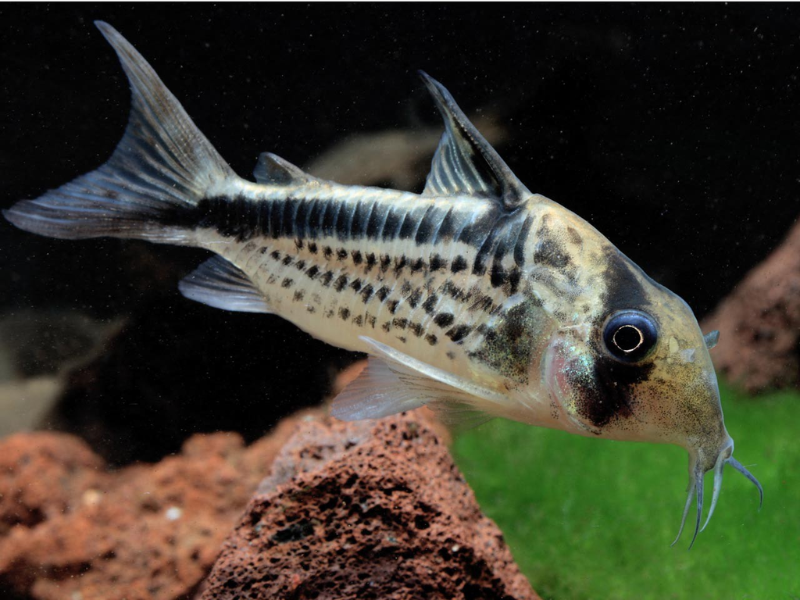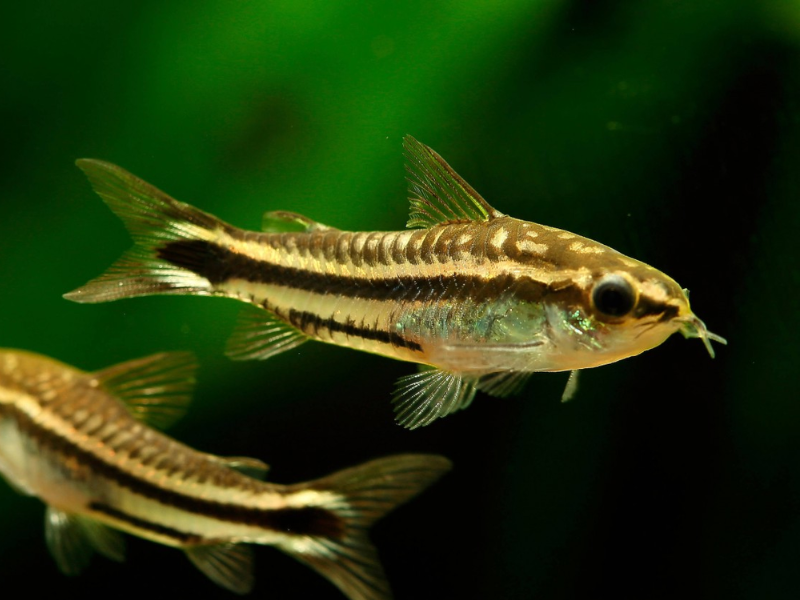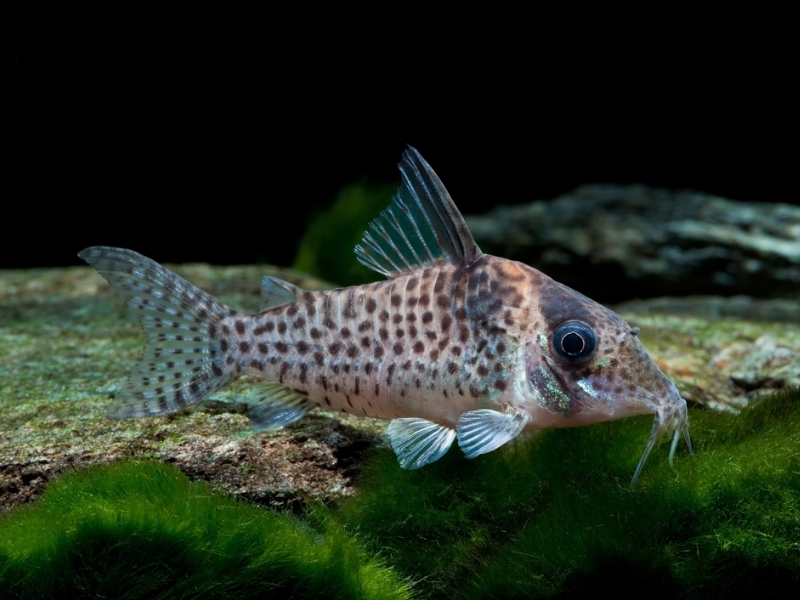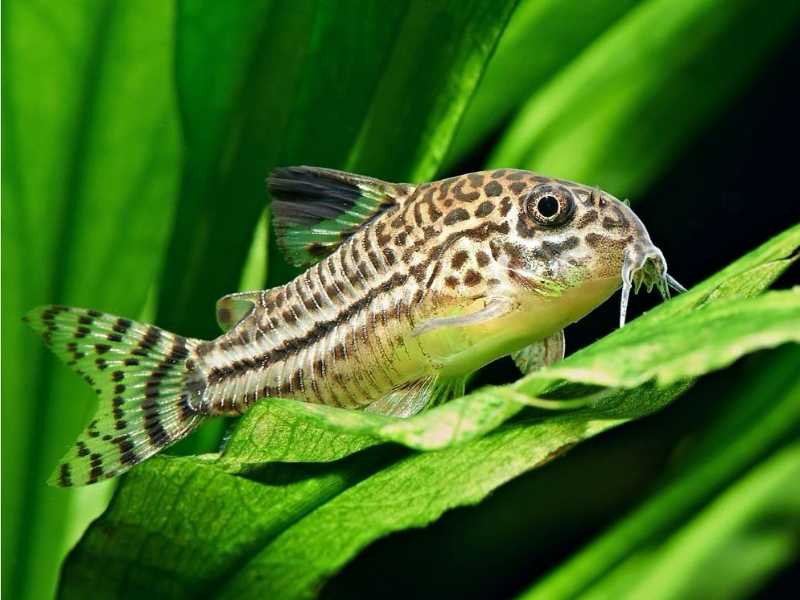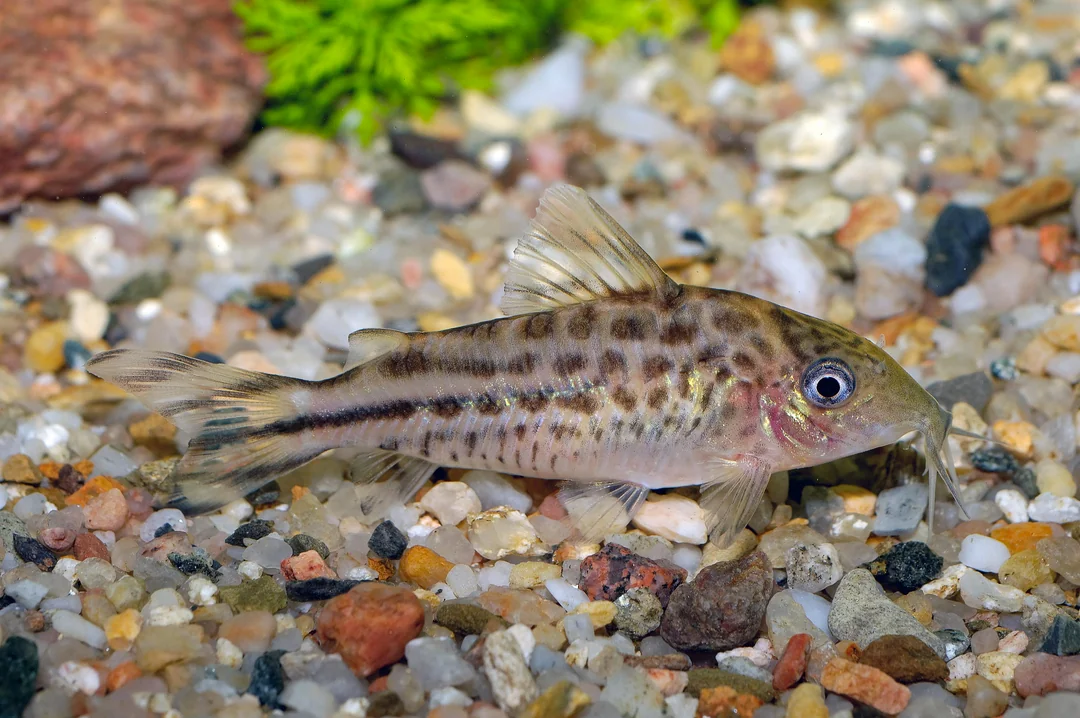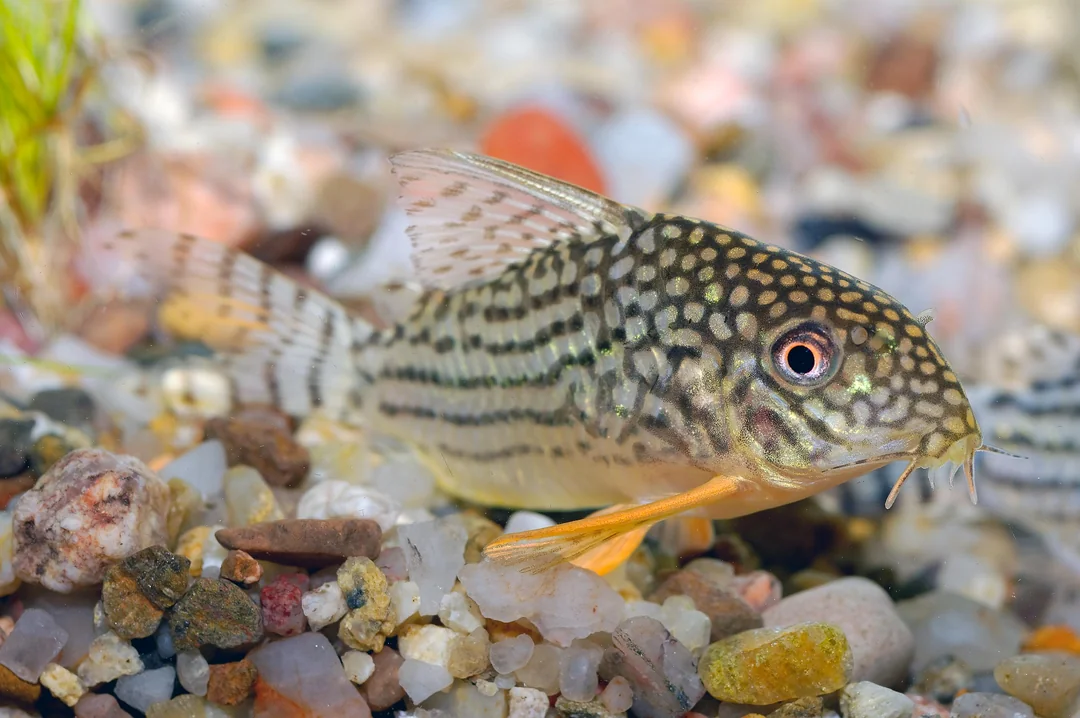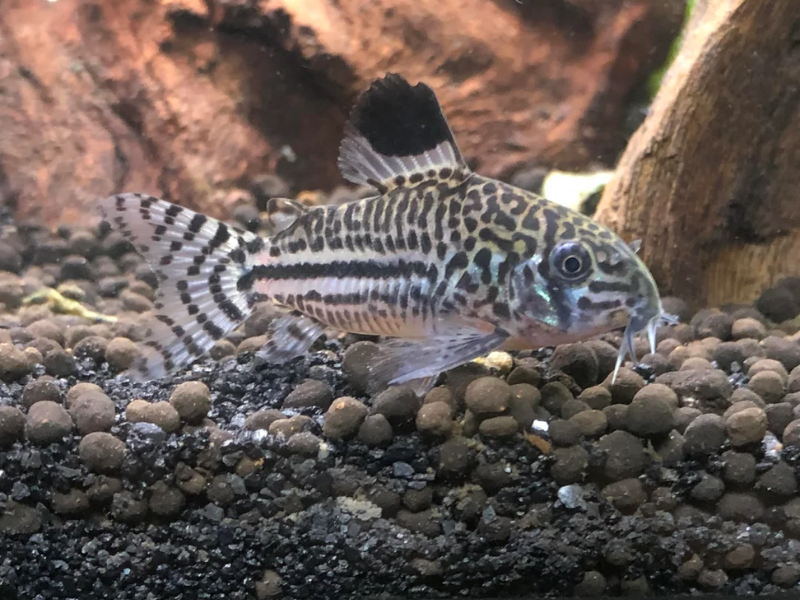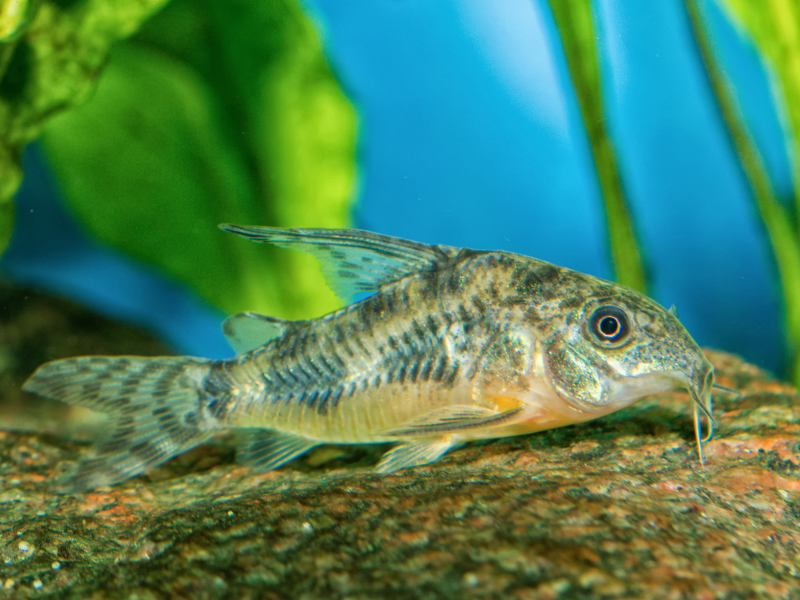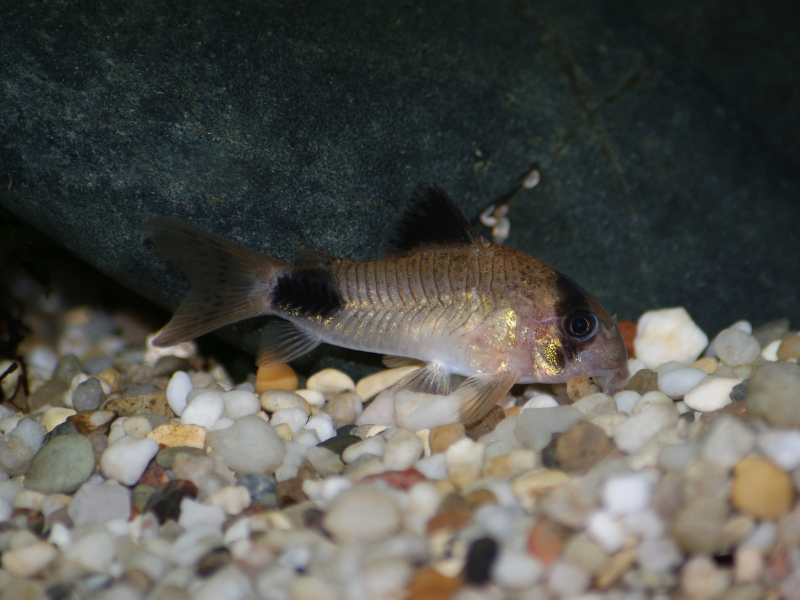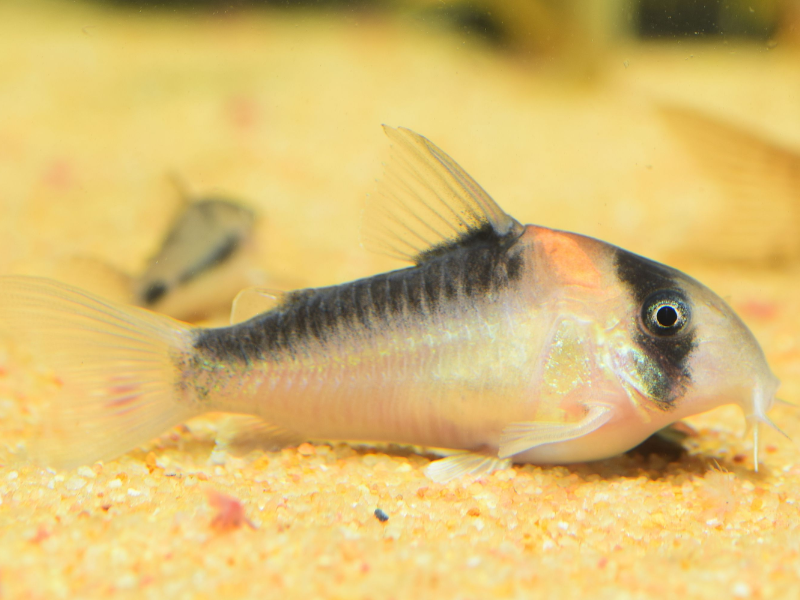Hoplisoma melanistium
Blacksail Cory
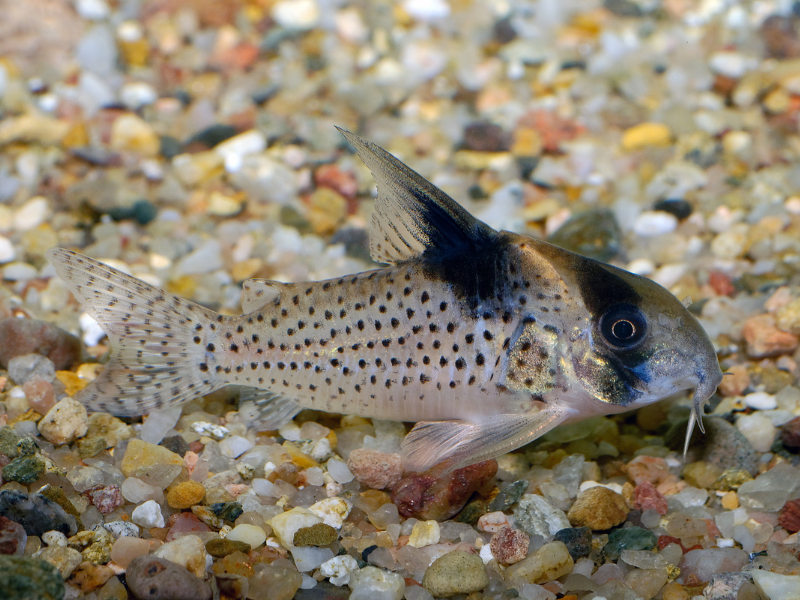
Scientific Classification
Quick Stats
Aquarium Building Information
About This Species
Basic Description
A peaceful and social bottom-dwelling catfish, the Blacksail Cory is a delightful addition to community aquariums, known for its active scavenging habits. This small fish thrives when kept in groups, as it displays more natural and confident behavior with others of its kind. They are active explorers of the tank's lower level, constantly sifting through the substrate with their sensitive barbels in search of food. Their diet is unfussy; as omnivores, they readily accept a variety of sinking foods, including pellets, wafers, and occasional treats of frozen or live foods. This makes feeding them straightforward for most keepers.
While generally hardy, they do best in a well-maintained, established aquarium. A key characteristic of this species is its ability to occasionally dart to the surface for a gulp of air, which is a fascinating natural behavior. They are an excellent choice for a peaceful community tank, coexisting well with other small, non-aggressive fish that occupy the middle and upper levels of the water column. With proper care and a suitable environment, these charming catfish can live for several years, becoming a long-term favorite for many aquarists.
Detailed Description
The Blacksail Cory is a captivating benthic species originating from the slow-moving rivers and tributaries of South America. Its natural habitat consists of soft, sandy, or muddy-bottomed waters, often shaded by dense vegetation and containing leaf litter. These conditions inform its ideal aquarium setup, which should prioritize a soft sand substrate to protect its delicate barbels from damage. These barbels are vital chemosensory organs used to locate food within the substrate. Sharp gravel should be avoided as it can lead to infections and an inability to feed properly.
The aquarium should feature gentle water flow to replicate the tranquil waters of its home. Providing ample hiding spots through the use of driftwood, caves, and dense plantings will make the fish feel secure and encourage natural foraging behavior. This species is highly social and exhibits complex group dynamics, making it essential to house them in schools. A group will be more active and less stressed than a solitary individual. They are peaceful and pose no threat to other fish, making them ideal for a community setting with similarly sized and tempered tank mates like small tetras, rasboras, and dwarf cichlids.
Physiologically, this fish is uniquely adapted to its environment. It possesses an ability for aerial respiration, meaning it can utilize atmospheric oxygen by gulping air at the surface. This is facilitated by a modified and highly vascularized intestine, allowing it to survive in waters with low dissolved oxygen levels. While this is a normal behavior, frequent trips to the surface may indicate poor water quality or low oxygenation in the aquarium. As an omnivore with a low metabolism, its diet should be varied and offered daily. A high-quality sinking pellet or wafer should form the staple, supplemented regularly with frozen or live foods to ensure a complete nutritional profile and promote robust health throughout its lifespan.
Scientific Description
Hoplisoma melanistium is a species of freshwater catfish belonging to the family Callichthyidae and the subfamily Corydoradinae. This classification places it among the armored catfishes, which are distinguished by the presence of two rows of overlapping bony plates, or scutes, along their flanks, rather than scales. Its body shape is fusiform, moderately elongated and laterally compressed, a morphology well-suited for its benthic lifestyle. Like other members of its genus, it possesses sensitive maxillary, rictal, and mental barbels which are instrumental in locating food items such as small crustaceans, insect larvae, and detritus within the substrate through chemoreception.
A significant physiological adaptation of this species is its capacity for facultative aerial respiration. In hypoxic conditions, it can ascend to the surface to swallow atmospheric air. The oxygen is then absorbed through the walls of a highly vascularized posterior portion of its intestine. This adaptation grants it a survival advantage in its native South American habitats, which can experience fluctuations in dissolved oxygen levels. Its oxygen consumption and waste production are relatively low, contributing to a modest bioload in a captive environment.
Taxonomically, the genus Hoplisoma, along with others, was recently resurrected to address the polyphyletic nature of the formerly all-encompassing genus Corydoras. Studies in molecular phylogenetics have led to a more refined classification of the Corydoradinae clade. Ecologically, H. melanistium functions as a bioturbator, constantly sifting through the top layer of the substrate, which contributes to nutrient cycling in its environment. Its IUCN Red List status as 'Least Concern' (LC) suggests that the species is currently widespread and not considered to be at immediate risk of extinction in its natural range.
Breeding Description
Breeding the Blacksail Cory presents a moderate challenge but is a rewarding endeavor for the dedicated hobbyist. Success begins with establishing a healthy, mature group of breeders and being able to distinguish between the sexes. Sexual dimorphism is subtle but discernible; females are typically larger, plumper, and have a rounder body shape, which is especially noticeable when viewed from above. Males, in contrast, are smaller and more slender. For optimal results, a breeding group with a higher ratio of males to females is recommended.
To encourage spawning, the conditioned group should be housed in a dedicated breeding aquarium. This tank should have a sandy substrate or be bare-bottomed to ensure egg safety, and include suitable surfaces for egg deposition such as fine-leaved plants, spawning mops, or the aquarium glass itself. Conditioning involves providing a rich, high-protein diet of live and frozen foods for several weeks.
The spawning event is typically triggered by simulating the onset of the rainy season. This is achieved by performing a large water change with water that is cooler and softer than that of the main tank. Increased aeration during this period can also help induce spawning. The reproductive process involves the characteristic 'T-position,' where the female presses her mouth against the male's genital opening to ingest his milt. She then releases and fertilizes a small clutch of adhesive eggs, which she carefully deposits on a chosen surface using a pouch formed by her pelvic fins. This process is repeated until all eggs are laid.
After spawning is complete, it is crucial to remove the adults from the breeding tank, as they will consume the eggs. The eggs will typically hatch within three to five days. During this incubation period, a gentle flow of water and a mild antifungal treatment can increase hatch rates. Once the fry have absorbed their yolk sacs, they become free-swimming and require microscopic foods such as infusoria or microworms. As they grow, their diet can be progressed to newly hatched brine shrimp and crushed flake food. Maintaining pristine water quality through frequent, small water changes is paramount for the survival and healthy development of the delicate fry.
Generate Printable Card
Create a printable card for this creature to display in your store or aquarium. The card includes a QR code for quick access to more information.
